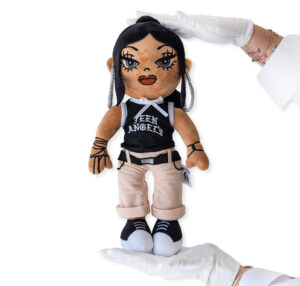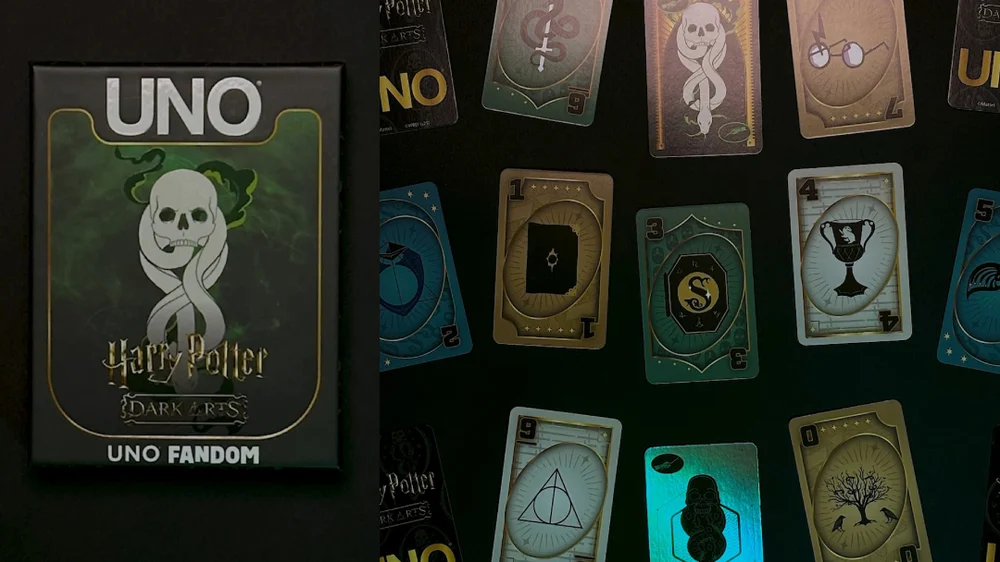
She stands just under a foot tall, yet her presence fills the room like a mural across a barrio wall. Stitched into every thread is memory, resistance, grace, and style. The Teen Angels x Hey Ruca Collectible Plush is no ordinary toy—it is an artifact of cultural reverence, a textile embodiment of Chicana resilience, and a soft-bodied sentinel of lived experience. Marked clearly as an adult collectible, this plush isn’t for toddlers—it’s for those who recognize the delicate power of representation, the sharp edge of nostalgia, and the joy of seeing their stories honored in fabric and form.
A collab forged between two cultural powerhouses—Teen Angels Magazine, the legendary publication that became a visual and literary time capsule of Chicano street culture, and Hey Ruca, the Bay Area-based creative brand helmed by artist Cecelia Perez—this plush distills decades of heritage, style, and storytelling into something deeply tactile and emotionally resonant.
Origins: From Páginas to Plush
To understand this plush is to understand the legacy of Teen Angels Magazine, which first hit the streets in 1980 under the vision of Teen Angel (Dave Holland). A former contributor to Lowrider Magazine, Teen Angel understood early on that the Chicano experience—especially that of street youth, incarcerated artists, and barrio poets—was not being documented with dignity or nuance.
What followed was a revolutionary form of visual journalism: hand-drawn artwork, calligraphic dedications, portraits of car clubs and homies, and verses from locked-down poets. These pages became sacred to a generation who saw their haircuts, eyeliner, ink, and sorrow reflected without judgment. Floral borders, black-and-gray tattoo motifs, and the unmistakable script lettering gave the magazine a signature style now etched into the iconography of Chicano art.
Fast-forward four decades, and the plush collaboration with Hey Ruca resurrects this spirit not on the page, but in plush fiber—bringing the same energy from the pen to the palm.
A Textile Icon: Stitched Attitude and Identity
What makes this plush so compelling is how it translates the essence of a Teen Angels cover girl into three-dimensional form. Her high ponytail is a tower of velvet—a reference to the gravity-defying chola hairstyles of the ’90s. Her dramatic winged eyeliner, embroidered with precision, channels an entire lineage of sharp femininity, a look not of trend but of defiance.
The plush wears a black halter top screen-printed with “Teen Angels” in gothic white lettering—a reference to the magazine’s masthead itself. Her light beige cuffed Dickies-style pants cinch just above classic black sneakers, their white soles stitched in visual rhythm with her rolled cuffs. The hoop earrings, made of coiled silver rope, are not afterthoughts but declarations. They are soft in material but loud in message: we are here, and we are beautiful.
Tattoo-like embroidery marks her arms with black ink motifs, nodding directly to the pen-and-ink style popularized by incarcerated artists featured in Teen Angels. Her eyebrows are arched and assertive. Her lips are full and dark. The plush does not depict softness as vulnerability—it depicts it as a surface for strength.
Hey Ruca’s Voice: Chicana at the Core
Behind the plush is the unmistakable vision of Cecelia Perez, known professionally as Hey Ruca—a Chicana artist and entrepreneur rooted in the San Francisco Bay Area. Through murals, apparel, stickers, and now plush collectibles, Hey Ruca’s work is a continual love letter to her community. Her aesthetic is unmistakable: lowrider dreamscapes, pachuco silhouettes, city skylines at dusk, cloud-filled vignettes glowing in airbrushed pastels.
In this collaboration, Perez achieves something rare—bringing the feminine icon of Chicano street culture into the hands of those who grew up seeing her reflected on alleyway walls, magazine pages, and tattoo sketches. It’s an object that recognizes homegirls not as caricature but as canon. Her figure may be plush, but her power is sculpted from generations of women who held families together, rolled their own eyeliner, and demanded to be seen.
More Than Nostalgia: A Living Archive
While the plush serves as a nostalgic token for many, it is also a living archive. For young collectors and new generations exploring their identity through cultural artifacts, this plush becomes a gateway—not just to a fashion aesthetic, but to a history of resistance.
Teen Angels Magazine didn’t just showcase style—it preserved survival. It highlighted art created in prisons, poems passed between lovers in correctional institutions, tributes to fallen friends, and photos of neighborhoods ignored by mainstream media. The plush, in its own quiet way, picks up that baton. It becomes a mobile monument, a hand-held reminder that Chicano art is not frozen in the past but evolving and present.
Not a Toy, But a Testament
The plush is clearly labeled: not suitable for children under 3 years old. This isn’t a warning—it’s a curatorial declaration. This plush isn’t a toy, but a collectible—meant for shelves, altars, studios, gallery cases, and collector’s nests. It belongs next to vintage Teen Angels issues, framed photographs, or zines from Boyle Heights to Fruitvale.
It appeals to a demographic that grew up with trapper keepers covered in placas, walls covered in airbrush portraits, and bedroom drawers filled with folded love letters. It also belongs to a new generation: one using TikTok to document oldies playlists, remixing lowrider style into modern streetwear, and reclaiming ancestral aesthetics in digital ways.
Limited Edition, Limitless Meaning
Though the plush is available to purchase, its nature is intrinsically limited-edition. It speaks to a niche yet global audience. From Los Angeles to Tokyo, Oakland to Berlin, Chicano art’s visual language has migrated far beyond its origins, touching artists, collectors, and curators across continents.
This plush arrives at a time when cultural specificity is being celebrated rather than erased. It is not a diluted “urban” product. It is not generalized Latinx iconography. It is precisely Chicana. Precisely barrio. Precisely proud.
Cultural Stewardship in the 21st Century
As the arts ecosystem shifts toward new modes of storytelling—through NFTs, digital prints, and AI-generated art—it is powerful to see a medium as analog and sincere as a plush figure taking center stage. It invites touch, closeness, memory, and ownership in a different way. It doesn’t flash or glitch—it simply is, and in that being, it honors what came before.
For Hey Ruca and Teen Angels, this collaboration isn’t a novelty—it’s a continuation of work they’ve always done: preserving culture, representing communities, and refusing to let street stories be forgotten. In a world where representation is often commodified, this plush feels crafted, not calculated—a product of heart, not of hype.
Impression
The Teen Angels x Hey Ruca Collectible Plush is deceptively quiet. It doesn’t blast music, it doesn’t glow, it doesn’t blink. But in its stitched eyeliner, in the twist of its ponytail, in the fold of its pants and the ink on its arm—it tells a story that reverberates across generations.
It is a plush only in material—its soul is made of sharper things: memory, identity, defiance, pride.
For the Chicano and Chicana communities, for cultural archivists, for lowrider historians, and for every homegirl who ever penned a dedication in gel pen or lined her lips in the backseat of a car club meet-up—this collectible is not just merch. It is recognition.
No comments yet.









